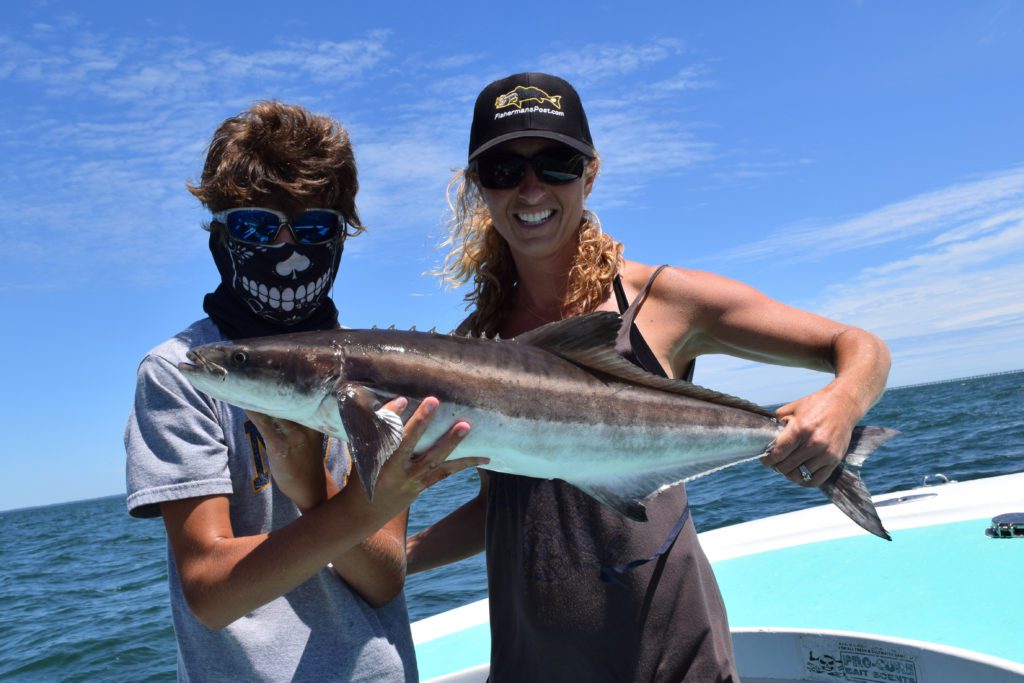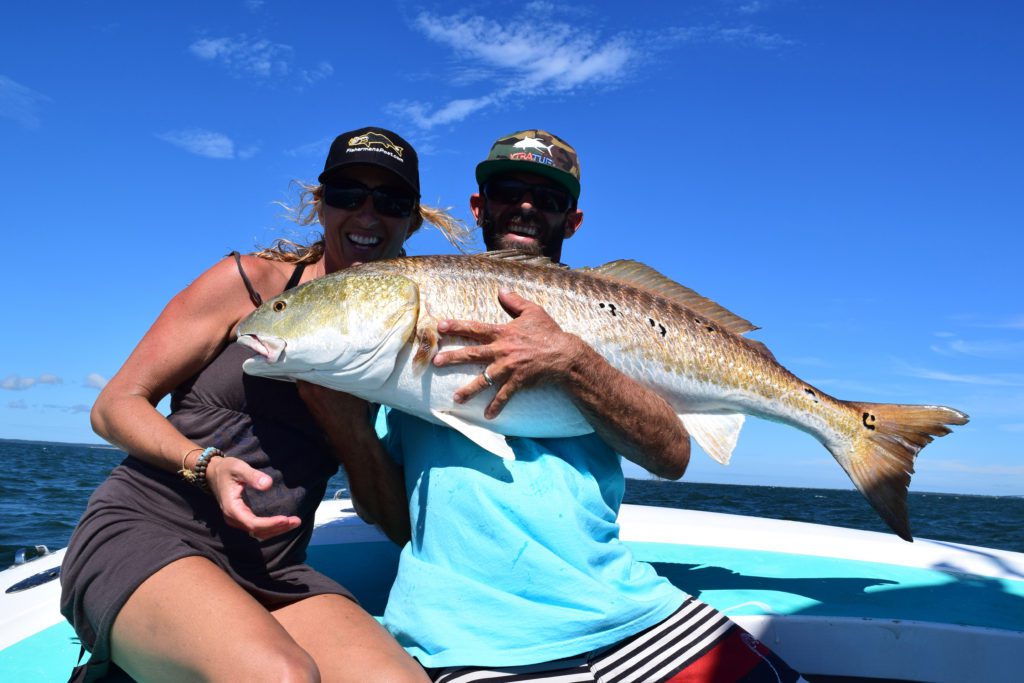Tidelines – August 17, 2017
As my wife Leslie and I enjoyed morning coffee on our hotel room’s balcony, she focused mostly on the people below headed out for morning exercise on the Virginia Beach boardwalk, but I was looking out over the Atlantic Ocean and then down to the left to the opening of the Chesapeake Bay, noting the light winds and the mostly blue skies that promised good conditions for our day’s fishing trip. By mid-morning we would be sight casting to cobia with Capt. Aaron Beatson of Carolina Sunrise Charters in the lower Chesapeake Bay.
We had about a one hour drive that morning from Virginia Beach’s Courtyard by Marriott over the Chesapeake Bay Bridge-Tunnel to Cape Charles on the eastern shore of Virginia. Aaron had given us the option the night before of meeting at either 9:00 or 10:00 in the morning. There was no need for an early start because we needed the sun up in the sky to see the fish in the water, and since we had just headed out for dinner and drinks at Tautog’s and planned to celebrate a birthday, Leslie and I opted for the more leisurely 10:00 am start.

Leslie Hurley and Alex Brown (Mate-in-Training) with a cobia caught (and released) on a 4″ custom bucktail just 15 minutes into a sight casting trip on the Chesapeake Bay out of Cape Charles. They were fishing with Capt. Aaron Beatson of Carolina Sunrise Charters.
Aaron makes his home in Nags Head and typically charters out of the Wancheese Marina, but since he spent most of the summers of his youth in the Cape Charles and Virginia Beach area, an area renowned for its August/September cobia fishing and often boasting days of 30+ fish, he makes it a point to return every year.
Leslie and I managed to fit early August into his schedule, a little before the peak cobia fishing that would truly start mid or late-August.
Joining us on the boat that day was 14-year-old Alex Brown, referred to by Aaron as his Mate-in-Training. We were just outside the mouth of Cape Charles Yacht Center, when Alex handed Aaron a live eel rod and Aaron cast the live eel off the back of the boat.
Not knowing the cobia fishery in the Chesapeake Bay, I asked if we were already trolling eels for cobia not less than 100 yards out of the marina. Aaron replied that pleasant surprises often happen when you’re cobia fishing and we certainly could hook a cobia that way, but he was dragging the eel for a different purpose.
Fresh eels like to wind up in a ball, and wound up in a ball isn’t the best way to present an eel to a cobia. So Aaron has found that if he drags the eel behind the boat for a little ways, it mellows the eel out and the eel relaxes more as it waits in the 5-gallon bucket filled a quarter of the way with fresh saltwater and sitting up in the tower at Aaron’s feet.
After checking in on his cell phone with a couple of captain buddies (that had started at 9:00 am) Aaron found out that fish had already been hooked close to the Cape Charles area and decided to sight fish our way towards an area known as the “Trench,” a deep spot (up to 180’) believed to be created when a meteor (bolide) crashed into the area 35 million years ago.
We had just started looking for fish and were still in 40’ of water when Mate-in-Training saw our first cobia of the day, a sub 40” fish—40” being the minimum size to keep a cobia in Virginia—slowly cruising just under the surface headed from south to north. Since it wasn’t a keeper, we used the trout rod that had been put on board just for this purpose, a lighter rod to make a smaller fish a bigger fight.
As usual when I’m out with Leslie, she was the VIP of the boat, so first fish honors went to her, and her first cobia put up the typical cobia fight. The fish went on an initial run but then allowed itself to be slowly coerced towards the boat. Then when it saw the boat, it went away and deep. This “gain line/lose line” dance played out a couple more times before the fish ultimately went head first into the over-sized landing net.

Leslie Hurley (left) and Capt. Aaron Beatson, of Carolina Sunrise Charters, pose quickly with a citation red drum caught on a Meat Hog bucktail with a plastic trailer. They were sight casting for cobia in the Chesapeake Bay when they spotted orange-colored water up in the distance.
Our day had quickly started with cobia action, and the action kept coming all day, providing us with several more cobia releases and many more cobia sightings. We saw well over 20 cobia of varying sizes cruising the Chesapeake Bay waters, but on our day we couldn’t get any of the bigger fish to eat, including a heart breaker—an estimated 70 lb. fish that gave our eel a look and even a moment of chase but ultimately turned away and kept heading up the bay.
Our afternoon of spotting, hooking, and releasing cobia was winding down, but like our captain said at the start of our trip, pleasant surprises can often happen when you’re cobia fishing. A lighter patch of water up in the distance caught everyone’s eye on the boat, and as we neared, the water began to look more orange.
The day’s sight casting for cobia ended with sight casting to a school of citation-sized drum cruising the surface. These big reds, similar to the big cobia we had seen all day, were a little wary and not feeding aggressively, but unlike the bigger cobia, two of the drum cooperated, hitting the bucktails with soft plastic trailers and giving both Leslie and I yet another great memory on the day.
Capt. Aaron Beatson of Carolina Sunrise Charters will fish from Rudee Inlet to Cape Charles well into September, so if sight casting for cobia sounds like an exciting trip, then give him a call at (252) 256-8083 or find him at www.cobiakiller.com. You can also fish with him in his home waters in the Oregon Inlet area the rest of the year, targeting speckled trout, flounder, red drum (including the big ones), striper, and, of course, cobia.
And remember, in addition to target species, pleasant surprises can also happen.





